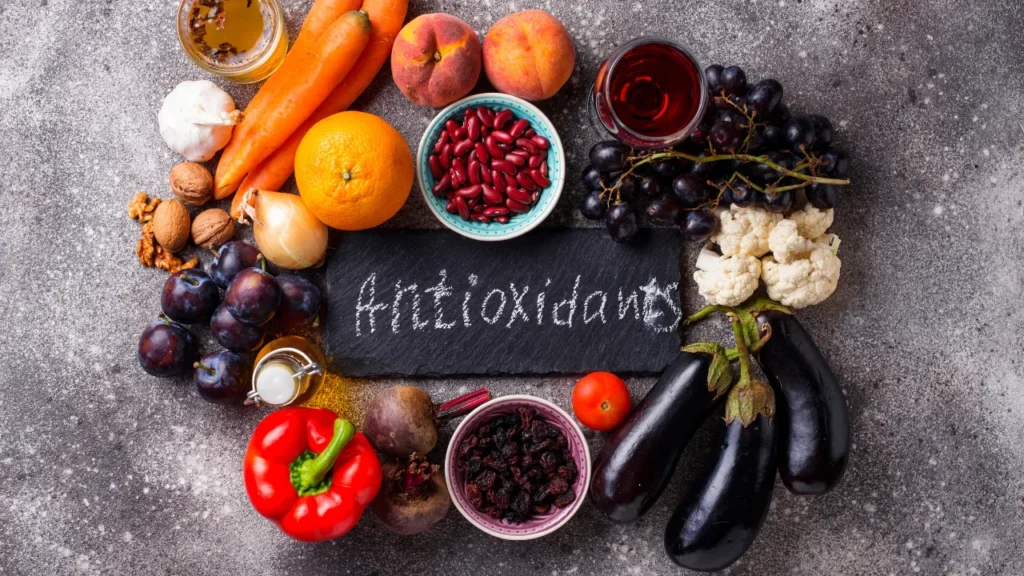Alchemilla is a genus of perennial herbaceous plants in the Rosaceae family, also known as lady’s mantle. This genus of plants, which are indigenous to Europe and Asia, has a lengthy history of use in numerous traditional medical systems. Alchemilla has attracted interest for its potential therapeutic benefits over the years, with uses ranging from wound healing to gastrointestinal health. This page offers a thorough analysis of Alchemilla’s chemistry, health advantages, recommended dosage, adverse effects, possible drug interactions, and appropriate uses as a nutritional supplement.
You May Also Like:
Five Great Reasons to Try a Nootropic Mushroom Supplement
What Are the Best Mushrooms for Brain Health? Here Are the Facts.
Alchemilla: Benefits, Dosage, Side Effects, Drug Interactions, And Other Important Information is an original (NootropicsPlanet) article.
Nature of Alchemilla
Alchemilla is a genus of herbaceous perennial plants with over 300 species indigenous to temperate and subarctic regions of Europe and Asia (Oarowski et al., 2013). The plants’ defining features are small, unnoticeable green to yellow blooms and unusual palmately lobed leaves with toothed margins. The name “Alchemilla” comes from the Arabic word “al-Kimya,” which denotes “alchemy” or “the art of transformation” (Moyler, 2014). The ancient usage of the plants in different therapeutic concoctions and the notion that their dewdrops possess magical properties are the most plausible causes of this link with alchemy.
The Alchemilla species prosper in various habitats, including meadows, forests, and hilly areas. They are well adapted to their local surroundings. Alchemilla vulgaris, Alchemilla mollis, and Alchemilla xanthochlora are typical species used in conventional medicine and investigated for their pharmacological effects (Loien et al., 2015). These plants have a broad spectrum of bioactive components, including flavonoids, phenolic acids, tannins, and essential oils, contributing to their versatile medicinal potential.
Health Benefits of Alchemilla
- Wound healing and skin health: Alchemilla’s tannins have an astringent effect traditionally used to speed up wound healing and soothe skin irritations (Chung et al., 1998). Triterpenes and flavonoids’ anti-inflammatory and antibacterial properties may also aid in healing by minimizing inflammation and preventing infection (Li et al., 2005).
- Digestive health: Alchemilla has been used to treat several gastrointestinal diseases in traditional medicine, including diarrhea, gastritis, and inflammatory bowel disease. Constricting the intestinal mucosa and lowering fluid secretion and its astringent characteristics related to tannins may help treat diarrhea (Chung et al., 1998). Additionally, the antioxidant and anti-inflammatory properties of phenolic acids and flavonoids may help to reduce inflammation brought on by gastrointestinal diseases (Kumar & Pandey, 2013).
- Various menstrual and menopausal problems, such as heavy monthly bleeding, cramping, and hot flashes, have been treated with alchemilla in traditional medicine. While flavonoids and triterpenes’ anti-inflammatory actions may aid with cramping and other monthly discomforts, tannins’ astringent characteristics may help prevent excessive menstrual flow (Chung et al., 1998; Li et al., 2005). Some Alchemilla ingredients may also have estrogenic actions that may help regulate menopause-related hormonal oscillations, relieving hot flashes and other symptoms (Bennetau-Pelissero et al., 2018).

Chemistry of Alchemilla
Alchemilla species have many chemical contents, many of which are bioactive and contribute to their pharmacological effects. Alchemilla’s main components include flavonoids, phenolic acids, tannins, triterpenes, and essential oils. While tannins and triterpenes have demonstrated astringent, antibacterial, and anti-inflammatory characteristics, flavonoids and phenolic acids are renowned for their antioxidant and anti-inflammatory capabilities (Oarowski et al., 2013). Germacrene D, -caryophyllene, -pinene, and limonene are among the principal components of Alchemilla’s essential oil, which has a highly varied composition (Loien et al., 2015).
Physiological Mechanism of Action
Alchemilla has a wide spectrum of pharmacological properties thanks to its many bioactive components. By scavenging reactive oxygen species (ROS) and controlling the activity of enzymes and transcription factors involved in inflammatory signaling pathways, flavonoids, such as quercetin and kaempferol, have demonstrated antioxidant and anti-inflammatory activities (Kumar & Pandey, 2013). Moreover, phenolic acids, such as chlorogenic and caffeic acids, have been proven to have antioxidant properties by giving hydrogen atoms to ROS and successfully neutralizing them (Sato et al., 2011).
Alchemilla contains a group of polyphenolic chemicals called tannins, which have been shown to have astringent and antibacterial properties. They are believed to bind and precipitate proteins, tightening and drying the skin and mucous membranes. Alchemilla’s ability to heal wounds may result from this action (Chung et al., 1998). Triterpenes, such as ursolic and oleanolic acids, have demonstrated anti-inflammatory and antibacterial properties, possibly by obstructing bacterial cell walls and decreasing the production of pro-inflammatory cytokines (Li et al., 2005).


Optimal Dosage of Alchemilla
As with many herbal supplements, the ideal dosage of Alchemilla varies depending on aspects like the user’s health, age and intended therapeutic impact. Few clinical trials have been conducted on Alchemilla, and an ideal, consistently followed dosage has not been determined. Traditional usage and professional advice, however, advise starting with a low dose and gradually increasing it according to a patient’s response and tolerance.
For instance, 1-2 mL of liquid extract (1:1 in 25% alcohol) or 2-4 g of dried herb in tea, taken up to three times a day, are typical recommendations for alchemilla extract (Bone & Mills, 2013). Before beginning supplementation with Alchemilla or any other herbal medicine, speak with a medical expert, especially if pregnant, breastfeeding, or taking medication.
Side Effects of Alchemilla
Alchemilla is generally regarded as safe when used sensibly and sparingly. However, some people may experience negative consequences like nausea, vomiting, or allergic reactions. Alchemilla supplementation should be used with caution by those with hormone-sensitive disorders, including breast, uterine, or ovarian cancer, because of its possible estrogenic effects (Bennetau-Pelissero et al., 2018). Speak with a healthcare provider if you suffer adverse side effects while taking Alchemilla or have questions about its safety.


Potential Substance Interactions with Alchemilla
Alchemilla and other drugs may interact; however, this is not well understood. Because it contains a variety of bioactive ingredients, it is important to consider any potential interactions with drugs or other dietary supplements.
- Anticoagulant and antiplatelet drugs: When taken with anticoagulant and antiplatelet medications like warfarin, heparin, or aspirin, Alchemilla’s flavonoids may raise the risk of bleeding (Kumar & Pandey, 2013).
- Hormone therapies: Due to its probable estrogenic properties, Alchemilla may interact with hormonal contraceptives or hormone replacement therapy (HRT). Before using Alchemilla with any of these medications, speak with a medical practitioner (Bennetau-Pelissero et al., 2018).
- Diabetes drugs: According to Eddouks et al. (2017), alchemilla may have hypoglycemic effects that may interact with diabetes medications and raise the risk of low blood sugar. If you take diabetes drugs, closely monitor your blood sugar levels and seek medical advice.
Best Responsible Uses of Alchemilla
Follow these recommendations to make sure Alchemilla is used responsibly as a dietary supplement:
- Before beginning a supplement regimen, speak with a healthcare provider, especially if you take medication, are pregnant, nursing, or have any pre-existing medical concerns.
- Start with a modest dose and gradually raise it according to personal tolerance and response, keeping any potential side effects in mind.
- To ensure correct labeling and purity, use a high-quality product from a reliable source.
Alchemilla:
Conclusion
Alchemilla is an herb with a rich history of traditional use in herbal medicine. While Alchemilla is primarily known for its effects on women’s health and digestive issues, some anecdotal evidence suggests potential benefits for other conditions, such as urinary tract infections and wound healing. Although traditional use and preliminary research suggest its therapeutic potential, more rigorous scientific studies, including clinical trials, are needed to confirm its efficacy, safety, and optimal uses. Individuals interested in using Alchemilla for medicinal purposes should consult with a healthcare professional for personalized advice and recommendations.


References:
- Alchemilla: A Review of its Traditional Uses, Phytochemistry, and Pharmacology. Link: https://www.hindawi.com/journals/ecam/2018/6250385/
- Essential oil composition of Alchemilla species growing in Lithuania. Link: https://pubmed.ncbi.nlm.nih.gov/26143447/
- Antioxidant activity and total phenolic content in Alchemilla species from the Carpathian Basin. Link: https://www.sciencedirect.com/science/article/pii/S1878535211001730
Important Note: The information contained in this article is for general informational purposes only, and should not be construed as health or medical advice, nor is it intended to diagnose, prevent, treat, or cure any disease or health condition. Before embarking on any diet, fitness regimen, or program of nutritional supplementation, it is advisable to consult your healthcare professional in order to determine its safety and probable efficacy in terms of your individual state of health.
Regarding Nutritional Supplements Or Other Non-Prescription Health Products: If any nutritional supplements or other non-prescription health products are mentioned in the foregoing article, any claims or statements made about them have not been evaluated by the U.S. Food and Drug Administration, and such nutritional supplements or other health products are not intended to diagnose, treat, cure, or prevent any disease.
